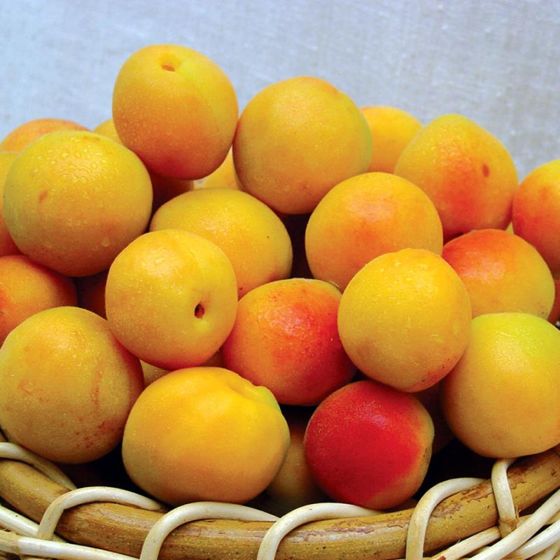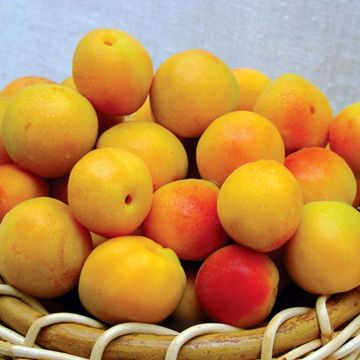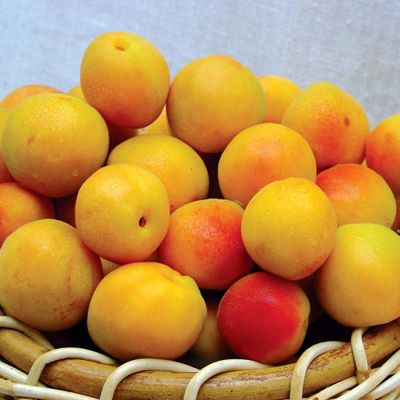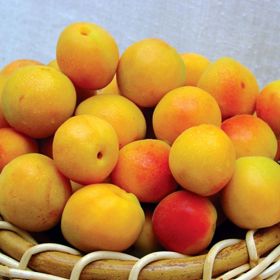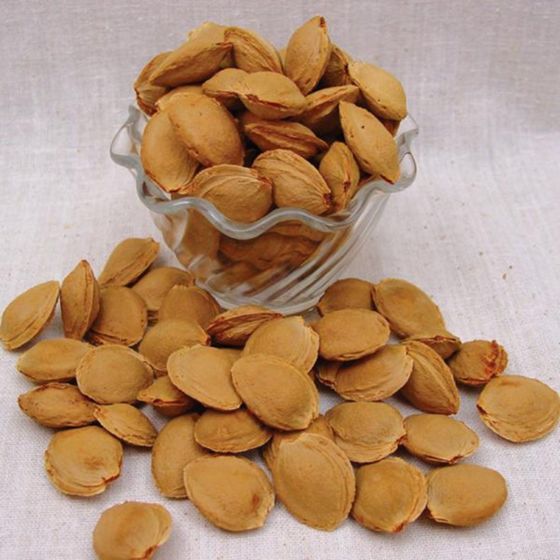Stark® SweetHeart™ Apricot Tree
Description
Enjoy fruits and nuts from the same tree! This variety produces big, luscious apricots with a second treat of tasty almond-like kernels inside the pit. Fruit flesh is firm, yet juicy with a sprightly flavor. The “nuts” can be eaten dried or used in any recipe calling for almonds. Easy to grow and maintain! Blooms late to avoid spring frosts and has an extended bloom period. Discovered in Homedale, Idaho in 1970. Freestone. Ripens in mid July. Self-pollinating.
Do not mix your Stark® SweetHeart™ kernels with the kernels of other apricots or peaches; almost all others are not edible.
Survival Guaranteed!


Since 1816, Stark Bro’s has promised to provide customers with the very best fruit trees and plants. It’s just that simple. If your trees or plants do not survive, please let us know within one year of delivery. We will send you a free one-time replacement, with a nominal shipping fee of $9.99. If the item in question is not available, we can issue a one-time credit to your account equaling the original product purchase price or issue you a refund. Read more about our warranty policy.
Characteristics
| Bloom Color | Pink |
| Bloom Time | Late |
| Fruit Color | Orange |
| Fruit Size | Medium - Large |
| Hardiness Zone Range | 5 - 8 |
| Pollination | Self-Pollinating |
| Ripens/Harvest | July |
| Shade/Sun | Full Sun |
| Soil Composition | Loamy |
| Soil Moisture | Well Drained |
| Soil pH Level | 6.0 - 7.0 |
| Taste | Sweet |
| Texture | Firm, Juicy |
| Years to Bear | 2 - 5 |
Size & Spacing
Mature Size
Recommended Spacing
Zone Compatibility
Pollination
This variety is self pollinating.
Tools & Supplies
Planting & Care
Learn all about how to grow apricot trees in The Growing Guide. An entire section of our website dedicated to your growing success.
Shipping Information
Estimated Delivery Date
Arrives when it's time to plant
Questions & Answers
Customer Reviews
More items we think you'll love!
 On Sale
This variety is compatible with your location
On Sale
This variety is compatible with your location
 On Sale
This variety is compatible with your location
On Sale
This variety is compatible with your location
 On Sale
This variety is compatible with your location
On Sale
This variety is compatible with your location
 On Sale
This variety is compatible with your location
On Sale
This variety is compatible with your location
 On Sale
This variety is compatible with your location
On Sale
This variety is compatible with your location
 On Sale
This variety is compatible with your location
On Sale
This variety is compatible with your location


